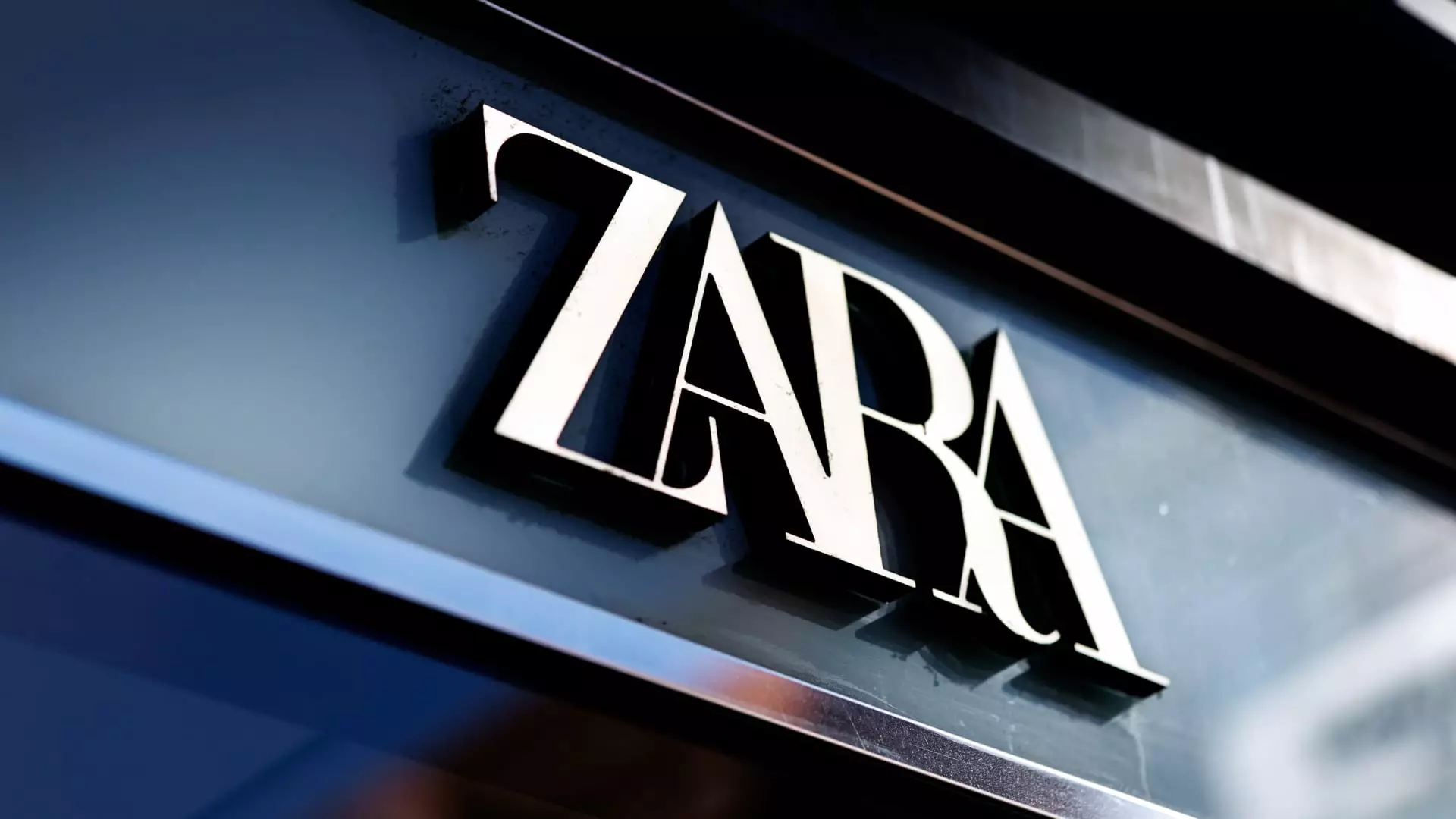The recent drop in Inditex’s stock, following the company’s latest quarterly earnings report, unveils a stark reality for one of fashion’s most celebrated giants. Reporting revenues of €8.27 billion against expectations of €8.39 billion, Inditex—the parent company of Zara—has painted a portrait of unsettling uncertainty. A net income just shy of analysts’ expectations further exacerbates these concerns, with shares plummeting by 4.4% shortly after the announcement. This scenario signals more than a mere bump in the road; it reflects a troubling shift in consumer behavior and market dynamics in the face of economic unpredictability.
The Illusion of Resilience
Inditex has long been heralded as a beacon of resilience in the retail industry, with its diverse portfolio, including beloved brands such as Bershka and Massimo Dutti. Yet, the cracks in this façade are beginning to surface. The company noted that summer sales have only increased by 6%, a sharp contrast to last year’s impressive 12% growth during the same period. This slowdown raises a pivotal question: Is the brand losing its grip on its customer base? The response from Gorka García-Tapia Yturriaga, Inditex’s head of investor relations, suggests an air of cautious optimism. However, one must wonder how effective this diversification strategy will be if consumer reluctance continues to mount.
The Tariff Tangle
A key element that cannot be overlooked is the looming specter of tariffs affecting consumer behavior. With the U.S. emerging as Inditex’s second-largest market, the ambiguity surrounding tariff impacts is deeply concerning. García-Tapia’s own admission of the situation’s unpredictability signifies precariousness that should not be taken lightly. For a company that operates globally, these economic headwinds are particularly troubling. The paradox lies in the fact that while Inditex touts a flexible supply chain, the reality is that such flexibility may not be enough to cushion the impact of declining consumer confidence driven by tariff-related uncertainties.
A Metrics Conundrum
In the face of slowing growth, market analysts are split. Consumer discretionary analyst Mamta Valechha highlights a dilemma that is becoming increasingly prevalent: Can Inditex maintain its valuation amidst what appears to be a normalization in growth rates? The answer seems to lie within the heart of the evolving consumer landscape. The beauty of Inditex’s fast-fashion model may be contending with aggressive competitors such as Shein and Temu, whose lower price points and swift turnover pose a formidable threat. With traditional drivers of Inditex’s past successes wavering, the question remains whether the brand can adapt quickly enough to evade the heavy pitfalls of a changing retail environment.
The Impact of Stagnation
Beyond immediate sales figures and stock performance, a critical examination of Inditex’s long-term trajectory reveals potential stagnation. Following a significant sales surge in the previous fiscal quarter, the current figures can no longer be viewed in isolation. They reflect a larger trend of consumer hesitation in luxury purchases, where economic stability plays a vital role. This hesitance is likely to fuel debates among investors and analysts alike, with skeptics raising flags over whether the company’s market valuation can withstand the pressures of an unpredictable economy. The skepticism is validated by the fact that prior to this report, Inditex shares had already seen a decline of approximately 12% from its peak—a concerning trend that cannot be ignored.
The Future is Uncertain
As Inditex grapples with these multifaceted challenges, it may be too soon to discard the company’s merits entirely. With its vast global reach and a strong historical track record, some optimists may argue that brighter days lie ahead. However, the road to recovery demands a strategic overhaul in how Inditex engages with its consumer base and navigates economic turbulence. The retail landscape is in flux, and companies that fail to anticipate shifts in consumer sentiment or adapt accordingly may find themselves on shaky ground. While the potential for growth exists, the immediate reality paints a much less rosy picture—one that compels stakeholders to question whether Inditex can retain its high-flying status in an industry marked by fierce competition and economic headwinds.

